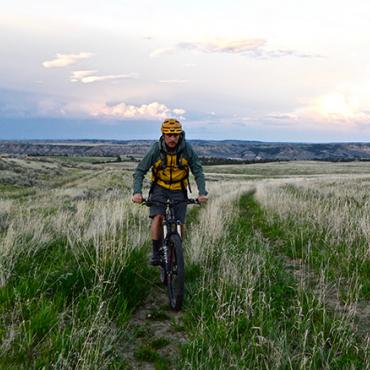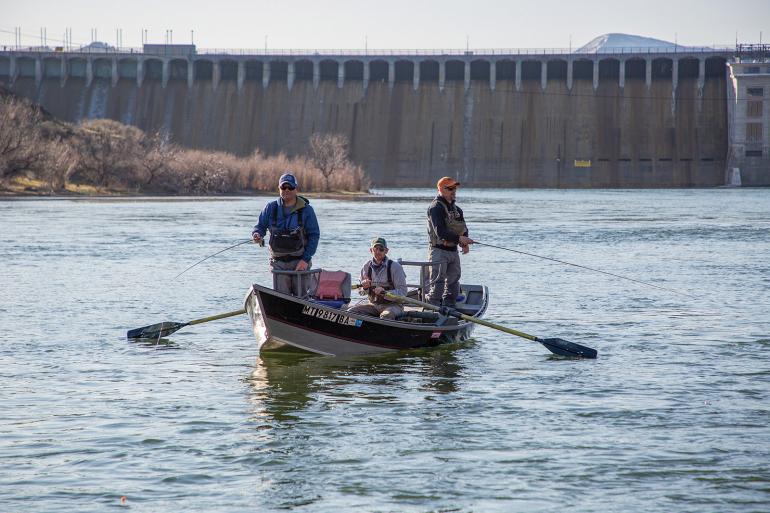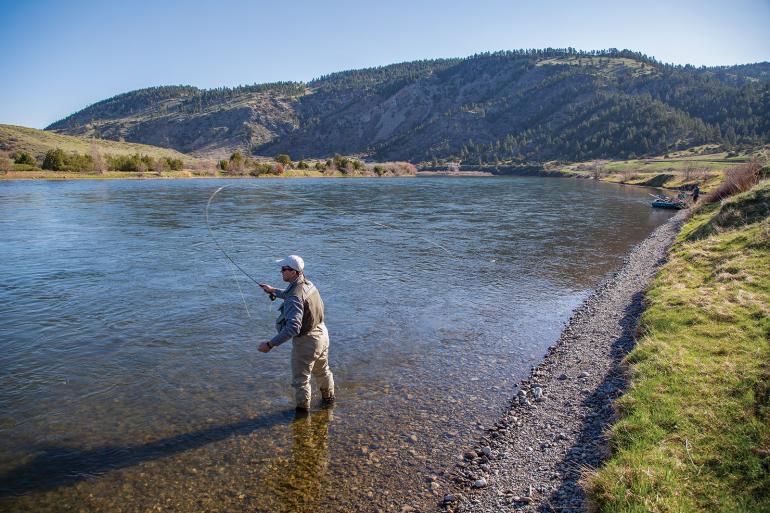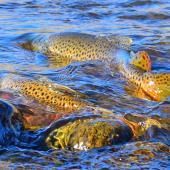Missouri: All-Season Angling
Tips and tactics for the Mighty Mo.
From its origin at Three Forks north to Cascade, the mighty Missouri River winds 130 miles through rolling hills, deep canyons, and arid sagebrush plains. While the river is fishable and floatable for its entire length, the best stretch for fly anglers is the 40 miles downriver of Holter Dam. It’s here that large trout feed year-round on prolific hatches, making the Missouri one of the most consistent destinations for dry-fly fishing in the state.
Access
Like many of the rivers in southwest Montana, access is not an issue—yet. In the upper reaches of the Holter-to-Cascade stretch, several of the access sites depend on private landowners, who have been cooperative thus far. Continued access will rely on continued cooperation. For drifters, boat launches flank the river from Holter Dam to Cascade, meaning you’ll have options when it comes to float lengths. Missouri River Recreation Rd. parallels the river along this section, and several state access sites exist. There are also clearly marked walk-in sites for wade fishermen.
Flows
Average flows during the busiest season—April to October—are 3,000-6,000cfs. During spring runoff, the river can crank at 10,000cfs or more, although sustained flows higher than 8,000cfs are rare. If you’re wading, avoid the river above 7,500cfs. Prime floating flow is from 5,500-8,000cfs, and fishing from a driftboat will give you access to much more water.
When to Go
The Missouri is truly a year-round river. Big hatches can happen any time, and winter offers some of the best fishing of the year, as you’ll have the place all to yourself. Just be sure to stock up on midges, as these diminutive flies make up much of a trout’s diet during the colder months. The best fishing on the Missouri, however, is from mid-June to mid-July, when caddis, pale-morning duns, and tricos flourish, satisfying the appetites of both hungry trout and dry-fly anglers. By late summer, terrestrials such as hoppers and ants dominate the menu. Fall is a great time to be casting for large brown trout, and anglers often strip streamers to entice trophy specimens from the river’s depths.
Fish
On the Missouri, expect to catch rainbows and browns, and lots of them. While browns are less prevalent throughout the river’s most productive stretches, many large, hook-jawed specimens have been pulled out of the Missouri, especially in the fall. It’s common for float-fishermen to pull in over a dozen 16- to 18-inch fish, with a handful measuring over 20 inches. Whitefish are also common on the Missouri, and fly fishing for carp is gaining popularity.
Row vs. Wade
Given its size, the Missouri is best fished from a boat, especially if you only have a short amount of time. You’ll get the most bang for your buck in a driftboat, covering more fishable water quicker. Ample boat launches and shuttle services exist. Having said that, if you plan on sticking around a while, or if you make southwest Montana your home, the Missouri’s consistent flows make for good wade-fishing, too—there’s nothing quite like stalking trout on your own two feet. Again, when the river gets above 7,500cfs, floating is the safest option.
Regs
The Missouri is open year-round to anglers, with standard creel limits on trout. From time to time, sections of the river can be put under weather-caused restrictions, so be sure to check in at the local fly shop for the latest information. Public access sites will also post notices for closures. As always, fwp.gov.mt is the authoritative source for anglers.
Getting There
From Bozeman, head west on I-90 to the Hwy. 287 exit just past Three Forks, and turn north toward Helena. The Upper Missouri appears roadside just past Toston; to fish the lower river, continue to Helena and head north on I-15 to the happy little fishing town of Craig.
David Tucker is the former managing editor for Outside Media Group, which publishes the Cast fishing guide.














